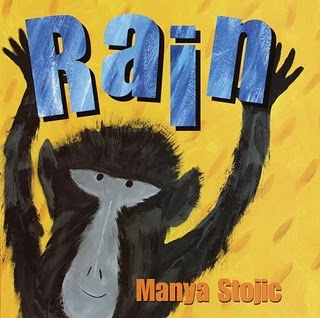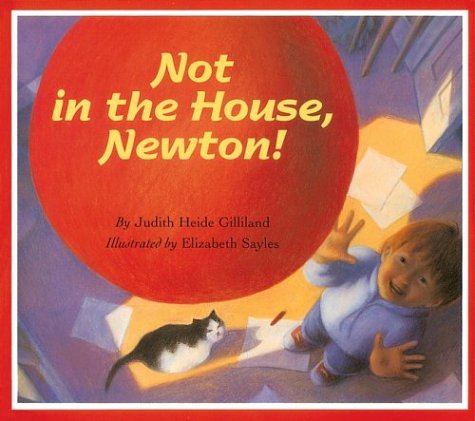Secure Checkout + FREE SHIPPING (U.S. Orders over $60)
Menu
-
- Home
-
About Us
-
The Approach
-
Linking Language & Literacy
-
Professional Learning
-
Learning Resources
-
SHOP
-
Blog
-
- About MindWing
- Our People
- Contact Us
- Your Account
- Login
-
United States (USD $)

Secure Checkout + FREE SHIPPING (U.S. Orders over $60)
Story Grammar and the Classroom Curriculum: The Five Senses
by Sean Sweeney May 16, 2015 3 min read
Over the years I have developed a special interest in collecting and using picture books that are tangential to the classroom curriculum. It’s wonderful to find books that contain touches of our content areas but aren’t “in your face” about it! These books can engage students in a story (and thus help them develop narrative language) while also providing a context to access abstract curriculum areas.
Although many schools cover this topic at different times of year, Spring is a great time for a science unit on the five senses. For younger students, this is a basic overview on how we experience the world though hearing, sight, smell, taste and touch. For older students, these simpler concepts can serve as an entry point to the more difficult intricacies of how the sensory system works. Additionally, May is Better Hearing and Speech Month in the USA and May Month in Canada, so what better time to talk about the sense of hearing, and maybe sync with some lessons about hearing and speech?
One of my tricks has always been to use Amazon.com’s book search tool to locate stories related to a topic. Although the search tool will of course return straightforward titles describing the topic, once in a while you also find those books that loosely theme to the topic. Here are three of my favorite books that tell stories involving the Five Senses, all of which would be great opportunities to use Braidy, the Story Braid or Story Grammar Marker to guide students through and retell the stories. In fact, within MindWing’s Autism Kit, the book It’s All About the Story contains a map or chart for thinking, talking and writing about “settings” in terms of the Five Senses. There is even a Five Senses Song, sung to the Tune of “This Land is Your Land,” a familiar song by Woody Guthrie! I have included these two pages from the manual for your download. You can get the whole manual (or Autism Kit) at MindWing’s online store:
 |
 |
| Click images to Enlarge | |
 The simplest of these is Rain by Manya Stojic, featuring animals on an African Savannah as they experience the coming rain through their senses. The book has wonderful pictures and simple text forming an action sequence. Because the theme involves cycling though the rainy and dry seasons, Braidy and SGM can help you form a visual for the students; just hold the Tie-Up to the Kick-Off to form a circle! In addition to the animals’ experience, the book touches on the cycle of plant growth, another key science curriculum topic and a nice opportunity for a picture sequencing task.
The simplest of these is Rain by Manya Stojic, featuring animals on an African Savannah as they experience the coming rain through their senses. The book has wonderful pictures and simple text forming an action sequence. Because the theme involves cycling though the rainy and dry seasons, Braidy and SGM can help you form a visual for the students; just hold the Tie-Up to the Kick-Off to form a circle! In addition to the animals’ experience, the book touches on the cycle of plant growth, another key science curriculum topic and a nice opportunity for a picture sequencing task.

Another thematic action sequence can be found in the book Night Train by Caroline Stutson and Katherine Tillotson, the tale of a young child’s experience on a train ride to the city. Narratively, it lacks a real plan and attempts (but as such, is great for using Braidy and SGM to move kids from isolated details to a real sequence of events), and focuses on the sensations inherent in the train ride: hearing the engineer call “all aboard,” seeing cows in the field, etc. The book can also be used to target other items in the transportation category and brainstorm the different sensations one would experience while riding a car, boat, plane...(thus getting into the expository element of Listing).
 Finally, a real crowd-pleaser can be found in Judith Hyde Guilliland’s Not in the House, Newton!, about a boy who finds a magic crayon that brings all his drawings to sense-pleasing (but mom-annoying) life! This one can be framed a bit more within the Critical Thinking Triangle, with Newton finding the magic red crayon (Kick-Off) and feeling excited, so planning to draw things he’d like to see come to life. Again, by extension the book can be used to List things that are red (or other colors) and imagine what would happen if they came to life from our drawings! Both Night Train and Newton are great for creating sense charts with students.
Finally, a real crowd-pleaser can be found in Judith Hyde Guilliland’s Not in the House, Newton!, about a boy who finds a magic crayon that brings all his drawings to sense-pleasing (but mom-annoying) life! This one can be framed a bit more within the Critical Thinking Triangle, with Newton finding the magic red crayon (Kick-Off) and feeling excited, so planning to draw things he’d like to see come to life. Again, by extension the book can be used to List things that are red (or other colors) and imagine what would happen if they came to life from our drawings! Both Night Train and Newton are great for creating sense charts with students.
Hope you enjoy these great Five Senses-themed and Braidy-friendly books and activities!
Sean Sweeney
Sean Sweeney, MS, MEd, CCC-SLP, is a speech-language pathologist and technology specialist working in private practice at the Ely Center in Needham, MA, and as a clinical supervisor at Boston University. He consults with local and national organizations on technology integration in speech and language interventions. His blog, SpeechTechie (www.speechtechie.com), looks at technology “through a language lens.” Contact him at sean@speechtechie.com.
Leave a comment.
Comments will be approved before showing up.
